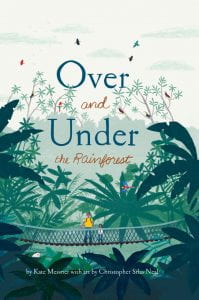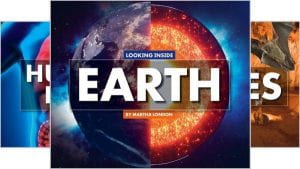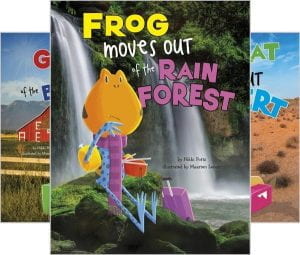 Messner, Kate. Over and Under the Rainforest. Chronicle Books, 2020. 978-1-452-16940-8. Unpaged. $18.99. Grades K-3.
Messner, Kate. Over and Under the Rainforest. Chronicle Books, 2020. 978-1-452-16940-8. Unpaged. $18.99. Grades K-3.
Following up Over and Under the Snow and Over and Under the Pond Messner explores the rainforest both high and low. Christopher Silas Neal’s artwork, overwhelming the pages in luscious saturated shades of green, draws the reader into the forest along with the young narrator and her guide. Above is a world of monkeys, insects, and birds. Colorful toucans, flit among the branches. Capuchin and howler monkeys and sloths move through the leafy growth. Below are critters and creatures, both cute and deadly: agoutis and crocodiles, anteaters and spiders. As the day wanes, the rainforest fades to purples, creatures of the night emerge, and the young narrator heads for home, Abuelita and supper. Messner’s informative text never overwhelms the reader. Facts are lovingly wrapped in description to evoke life in the rainforest.
THOUGHTS: Messner never disappoints, and this book will be a solid addition to any elementary collection, useful as a read-aloud or with a classroom curriculum.
Picture Book Nancy Nadig, Penn Manor SD


